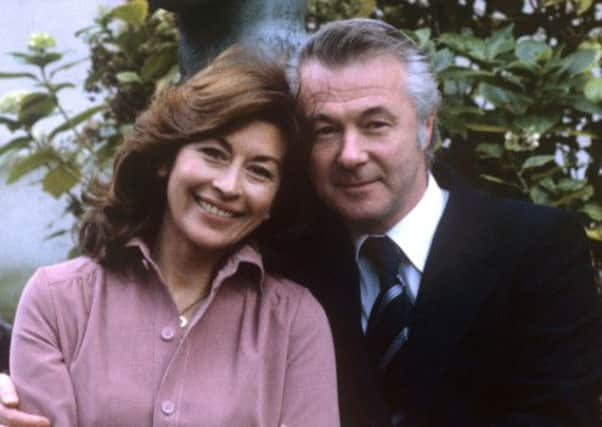Sad loss of a visionary who secured a Yorkshire film classic


Yorkshire can lay claim to an array of classic movies. Arguably top of the heap is The Railway Children, made in 1970 for £350,000 by actor-turned-director Lionel Jeffries.
But it was a film that might never have happened had it not been for Bryan Forbes who, in 1969, took on the management of Associated British (EMI) at Elstree Film Studios following a meeting with impresario Bernard Delfont.
Advertisement
Hide AdAdvertisement
Hide AdThe meeting had ostensibly been about a three-picture deal for the studio just after it had been taken over by Delfont and EMI. “Many conversations later,” recalled Forbes, “he offered me the running of the whole thing.”
Forbes took over a company in crisis. In truth the entire British film industry was in a perilous state of flux. His ambitions were mighty but not entirely unachievable: he would inject new life into British film by instituting a traditional studio system with a viable slate of 18 pictures.
Forbes signed a three-year contract with Associated British but left after only two years following a tremendous (and mean-spirited) mauling by the Press and industry observers who accused him of meddling when he should have been managing.
Other barbs were levelled at his lack of organisational and administrative skills – that he was creative, but only creative.
Advertisement
Hide AdAdvertisement
Hide AdForbes’s version of events is that he wanted some company “to stop the tremendous unemployment and redundancies and closures”. Consequently he went straight into production on four features.
Thus the film that became The Railway Children occurred purely by chance.
The fact that it has become a classic, makes its gestation and creation all the more remarkable.
Author E. Nesbit wrote the novel in 1905. It concerns the Waterburys, a well-to-do Edwardian family whose happiness is shattered when their father leaves their home one night accompanied by two mysterious strangers. When penury forces them to relocate to rural Yorkshire the three children, Roberta, Phyllis and Peter become fascinated by the nearby railroad.
Advertisement
Hide AdAdvertisement
Hide AdLionel Jeffries was sailing to New York on the QE2 when his eight-year- old daughter, Martha, suggested the book to him. Jeffries read it and was immediately smitten. On returning home, he bought the rights for £2,000 and began work on a screenplay.
Enthused by the concept of the movie, he was crestfallen when one potential financier after another gave him the brush-off. The time wasn’t right for “that kind of film”, they chirruped in unison. Jeffries soldiered doggedly on until he was backed by EMI.
Green-lit by Forbes, The Railway Children was rightly considered a “safe” project. Forbes knew what he was talking about. A former actor, he had successfully segued into screenwriting, moved onto producing and directing before taking on the stewardship of Associated British (EMI).
“The British public is weary of the spate of violence and pornography on both the large and the small screens,” he announced in a statement when the picture went into production. “There is a crying need for films which all the family can go and see.”
Advertisement
Hide AdAdvertisement
Hide AdThe 80-strong cast and crew of the film – including Jenny Agutter, Sally Thomsett, Gary Warren, Dinah Sheridan, Bernard Cribbins and William Mervyn – arrived in Yorkshire in May 1970.
Work began on Sunday, May 10, at Oakworth Station under the watchful eye of Bob Cryer, the chairman and a founder member of the Keighley & Worth Valley Railway Preservation Society and later the Labour MP for Keighley.
During his brief tenure as Head of Production at EMI, Forbes oversaw only two genuinely successful pictures. The Tales of Beatrix Potter was one. The Railway Children was the other.
“God knows what would have happened [in 1971/72] if we hadn’t made those 18 films,” he said later. “We put more than a finger in the dyke and at one time or another I seemed to have both feet and both hands in up to the elbow.
Advertisement
Hide AdAdvertisement
Hide Ad“We made an atmosphere at Elstree that was far removed from the old factory atmosphere. It was a studio and I tried to do things there that would make people feel that they were working for a studio as opposed to a factory.”
In seizing an opportunity to run his own studio – and in attempting to secure jobs in a rapidly changing landscape – Forbes created a scenario in which a fledgling director with a vision was given free rein to make the film he wanted. That film was The Railway Children.